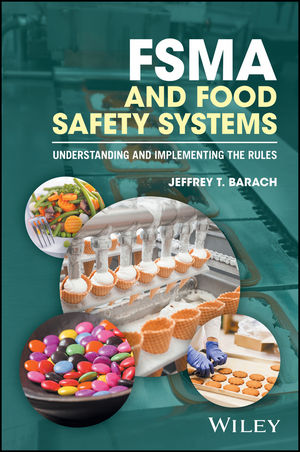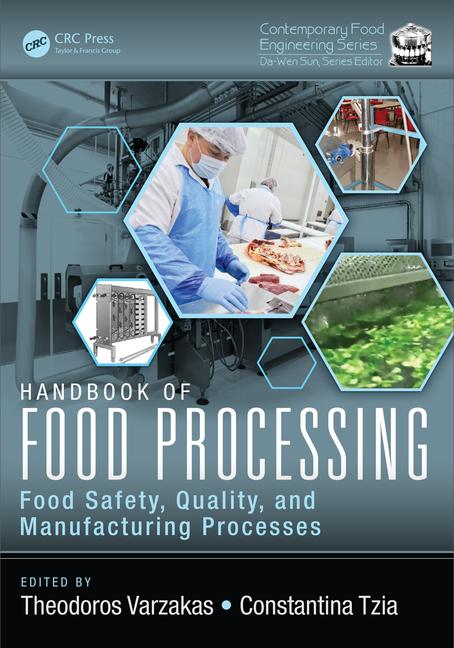Implementing an Effective Food Safety and Quality Continuous Improvement Program
FSQA continuous improvement programs play a pivotal role in elevating safety protocols, maintaining quality standards, and ensuring regulatory compliance

Image credit: Group4 Studio/E+ via Getty Images
In today's globalized and interconnected food industry, ensuring food safety and maintaining high quality standards are critical imperatives for every food business. Consumers increasingly demand transparency, safety, and quality in the products they purchase. Meanwhile, regulatory authorities continue to tighten standards, pushing companies to stay ahead of the curve. Continuous improvement programs play a pivotal role in achieving and sustaining these standards. These programs are dynamic frameworks designed to identify, address, and enhance various facets of food safety and quality management within an organization. Implementing such programs requires a structured approach encompassing several key elements.
By fostering a culture of vigilance, risk assessment, and continuous improvement, these programs play a pivotal role in elevating safety protocols, maintaining quality standards, and ensuring compliance with regulatory requirements. This introduction sets the stage for a comprehensive exploration of the key components and implementation strategies essential for creating and sustaining these vital programs within the food industry.
Understanding the Need for FSQA Continuous Improvement Programs
Before delving into the implementation process, it is crucial to comprehend the significance of continuous improvement programs in the food industry. These programs ensure that the highest standards of food safety and quality are non-negotiable.
Continuous improvement programs dedicated to food safety and quality are indispensable for several critical reasons:
- Safeguarding consumer health. Foodborne illnesses remain a significant global public health issue, with millions affected annually. Contamination, improper handling, and substandard production processes can lead to severe consequences, including outbreaks, hospitalizations, and fatalities. Continuous improvement programs ensure that potential hazards—biological, chemical, or physical—are proactively identified and mitigated. By prioritizing consumer health, food businesses not only fulfill ethical responsibilities but also minimize liabilities and associated costs.
- Upholding regulatory compliance and meeting GFSI standards. The food industry operates under stringent regulatory frameworks. Continuous improvement programs are essential for aligning operations with these regulations, ensuring compliance with standards such as the U.S. Food and Drug Administration's Food Safety Modernization Act (FDA's FSMA), and Global Food Safety Initiative (GFSI) Schemes SQF, BRC, IFS, ISO 22000/FSSC 22000, and other customer requirements. Upholding regulatory compliance and GFSI standards is not just a legal necessity; it is a commitment to consumer safety, brand reputation, and global market access. By integrating these standards into organizational processes and fostering a culture of compliance and improvement, food-related enterprises can ensure safer products, build trust with consumers, and access wider markets globally.
- Enhancing food safety protocols and mitigating risks across the supply chain. Continuous improvement programs focus on identifying potential hazards, mitigating risks, and ensuring compliance with stringent safety regulations. Regular assessments and audits aid in detecting vulnerabilities within the production, handling, and distribution processes. From sourcing raw materials to distributing the final product to consumers, the food supply chain is complex. Continuous improvement programs encompass risk assessment and management across this entire chain, reducing vulnerabilities at critical control points.
- Enhancing brand reputation and consumer trust. A single food safety incident can cause irreversible damage to a brand's reputation. Continuous improvement programs demonstrate an organization's dedication to high quality standards, fostering consumer trust and loyalty. Transparent communication about food safety practices can serve as a unique selling proposition in competitive markets.
- Elevating quality standards and optimizing operational efficiencies. Quality assurance is a cornerstone of any food-related enterprise. Continuous improvement programs facilitate the adoption of best practices, technology upgrades, and process optimizations to enhance product quality, process control, and consistency. Efficiency in food production is intertwined with safety and quality. Continuous improvement programs streamline processes, reduce waste, and optimize operations, leading to cost savings and improved productivity.
- Adapting to evolving consumer demands. Consumers today are more informed and demand products that meet higher safety, quality, and sustainability standards. Continuous improvement programs help businesses stay agile and responsive to these changing demands, whether through innovation, clean labeling, or sustainability initiatives.
- Cultivating a culture of vigilance and excellence. Continuous improvement programs foster a culture of ongoing learning, accountability, and innovation within the workforce. Training sessions, workshops, and regular feedback mechanisms are vital components that empower the workforce to actively participate in maintaining safety and quality standards. In essence, in an industry where safety, quality, and compliance are paramount, these programs serve as the backbone for sustained success, consumer trust, and competitive advantage. They empower organizations to proactively address challenges, optimize processes, and consistently deliver safe, high-quality products to the market.
Key Components of an Effective FSQA Continuous Improvement Program
Developing a robust continuous improvement program involves addressing multiple facets of food safety and quality. Outlined below are the essential components that form the backbone of such a program.
- Food safety culture. A mature food safety culture ensures that all employees, regardless of their role, prioritize food safety and quality. Leadership commitment, clear communication, and accountability are key elements in fostering this culture.
- Hazard analysis and risk assessment. Effective programs begin with a thorough understanding of potential risks and hazards. Tools like Hazard Analysis and Critical Control Points (HACCP) are essential for identifying and mitigating risks at every stage of the food production process. Regular updates to these analyses ensure relevance in the face of new challenges.
- Good manufacturing practices (GMPs). Adherence to GMPs ensures that facilities, processes, equipment, and personnel operate in a hygienic and efficient manner. These practices are the foundation of safe and high-quality food production, which ensures consistent food safety and minimizes the risk of contamination.
- Comprehensive policies and standard operating procedures (SOPs). Clear, well-documented policies and SOPs provide a foundation for maintaining high standards. These policies and procedures should outline critical control points, preventive measures, and corrective actions. Regular reviews and updates to these documents ensure alignment with evolving regulations and best practices.
- Effective sanitation programs. A robust sanitation program includes detailed master cleaning schedules, proper use of sanitizing agents, and verification of sanitation effectiveness. These practices reduce the risk of microbial contamination and help maintain facility cleanliness.
- Advanced allergen management programs. Allergen management is critical to protecting sensitive consumers. Effective programs include strict cross-contact prevention measures, sanitation programs, allergen testing, and clear labeling to ensure compliance with regulatory requirements.
- Pathogen environmental monitoring programs (PEMPs). Environmental monitoring programs (EMPs) detect and address pathogens such as Listeria and Salmonella in processing facilities. Regular testing, trends analysis, and corrective actions reduce contamination risks.
- Effective quality control (QC) and quality assurance (QA) programs. QC focuses on detecting defects, while QA ensures that processes prevent quality issues. Together, QC and QA provide a robust framework for maintaining consistent product quality.
- Corrective and preventive actions (CAPAs). CAPAs address the root causes of non-conformities and outline a path for implementing preventive measures to avoid recurrence. This proactive approach enhances FSQA program effectiveness.
- Food defense and food fraud mitigation plans. Food defense programs address intentional contamination risks, while food fraud mitigation strategies prevent economic adulteration. Both require rigorous risk assessments, supplier vetting, and supply chain monitoring.
- Six Sigma methodologies and techniques.Six Sigma tools enhance process efficiency and reduce variability. Techniques include:
- The 5S method (Sort, Set in Order, Shine, Standardize, Sustain), which improves workplace organization.
- The Kanban system optimizes workflow management.
- Gemba walks identify improvement opportunities through firsthand observation.
- The PDCA method (Plan–Do–Check–Act) promotes iterative problem-solving.
- The DMAIC method (Define, Measure, Analyze, Improve, Control) is used for data-driven improvements.
- Value stream mapping identifies and eliminates inefficiencies.
- Lean manufacturing procedures. Lean principles streamline production by eliminating waste, improving the cost balance of workflow and QA and enhancing resource utilization.
- Employee training and skills development. Employees play a pivotal role in implementing food safety and quality practices. Regular training programs should be conducted to keep staff updated on the latest food safety protocols, technological advancements, and regulatory requirements. Engaging employees through recognition and rewards can also drive adherence to safety standards. Empowered, skilled employees are critical to the program's success.
- Robust supplier management. Suppliers are integral to the food production process, making their compliance with safety and quality standards essential. A robust supplier management system includes supplier audits, supplier quality scorecards/matrix, certifications, and performance monitoring. Building strong partnerships with suppliers fosters mutual accountability and trust.
- Advanced traceability systems. Traceability is a cornerstone of effective food safety programs. Advanced technologies such as blockchain, radio frequency identification (RFID), and the Internet of Things (IoT) enable real-time tracking of products throughout the supply chain. Real-time tracking helps ensure rapid identification and resolution of issues, reducing the impact of recalls and contamination incidents.
- Continuous monitoring and testing. Regular monitoring and testing of raw materials, process controls, and finished products are crucial for maintaining safety and quality. Automated systems and data analytics can enhance real-time monitoring, providing actionable insights to address deviations promptly.
- Audits and feedback mechanisms. Robust internal audits and third-party audits evaluate program effectiveness and identify improvement areas. Feedback from audits should be used to refine processes, enhance training, and address systemic issues. Third-party certifications also add credibility to the program.
- Integration of new technology and innovation. The food industry is undergoing a digital transformation, and continuous improvement programs must leverage technology to stay competitive. Automation, machine learning, and predictive analytics can streamline operations, reduce human error, and provide valuable insights for decision-making. Adopting automation, artificial intelligence (AI), and predictive analytics enhances food safety practices by streamlining processes and identifying potential issues in real time.
- Sustainability and environmental considerations. Modern food safety programs should incorporate sustainability goals, such as reducing waste, minimizing resource use, and adopting eco-friendly packaging. These efforts not only meet consumer expectations but also contribute to long-term business resilience.
- Customer feedback and complaint resolution. Customer feedback is an invaluable source of insight into continuous improvement. Establishing a robust mechanism for addressing complaints and integrating this feedback into program enhancements ensures a customer-centric approach.
- Crisis management and recall preparedness. Despite a company's best efforts, issues may still arise. Having a well-defined crisis management and recall plan in place ensures swift, effective action to minimize harm and protect the brand's reputation. Regular simulations and drills, such as holding a "mock recall," can help teams remain prepared.
- Performance metrics and KPIs. Continuous improvement programs should include measurable key performance indicators (KPIs) to evaluate progress. Metrics such as defect rates, "right first time" (RFT), cost of quality, audit scores, and customer satisfaction provide a clear picture of program effectiveness and areas needing attention.
- Fostering cross-departmental collaboration. Food safety and quality are cross-functional responsibilities that require collaboration across departments, including procurement, production, logistics, and marketing. Clear communication channels and shared goals ensure alignment and efficiency.
Implementing an Effective Food Safety and Quality Continuous Improvement Program
Establishing a successful continuous improvement program requires a strategic, step-by-step approach, as outlined below.
- Step 1: Establish clear objectives and goals. Define the specific objectives and goals of the continuous improvement program. Whether it is reducing foodborne risks, enhancing product quality, or aligning with regulatory standards, clarity in objectives is crucial.
- Step 2: Formulate a dedicated team. Assemble a cross-functional team comprising members from various departments—production, quality assurance, compliance, supply chain, and management. This team will spearhead the implementation and monitoring of the program.
- Step 3: Conduct comprehensive risk assessments. Evaluate potential hazards and vulnerabilities throughout the supply chain, using tools like HACCP principles and failure mode and effects analysis (FMEA). Identify potential risks and vulnerabilities within the production, processing, and distribution channels. Map out and implement effective critical control points and preventive controls.
- Step 4: Develop standard operating procedures (SOPs). Document detailed procedures for all critical processes, ensuring consistency and compliance with regulations. Create robust SOPs based on the identified risks and control measures. These procedures should be meticulously detailed, easy to understand, and accessible to all relevant personnel.
- Step 5: Implement monitoring and measurement systems. Deploy state-of-the-art monitoring systems to track key performance indicators (KPIs). Real-time data collection tools enable prompt identification of deviations from established norms.
- Step 6: Training and awareness programs. Conduct regular training sessions and awareness programs to educate employees about the importance of food safety and quality standards. Empower them with the knowledge and skills required to execute SOPs effectively.
- Step 7: Continuous evaluation and improvement. Establish a cycle of continuous evaluation through audits, reviews, and feedback mechanisms. Analyze performance metrics and feedback to identify areas for improvement and implement necessary changes.
- Step 8: Documentation and reporting. Maintain comprehensive documentation and records of all activities, including processes, monitoring, testing, and corrective actions. Regular reporting to stakeholders ensures transparency and accountability.
Takeaway
Implementing an effective food safety and quality continuous improvement program is a multifaceted endeavor that requires commitment, resources, and a proactive mindset. By safeguarding consumer health, upholding regulatory compliance, and embracing innovation, companies can ensure consistent delivery of safe, high-quality products. Furthermore, such programs enhance brand reputation, operational efficiency, and customer trust, driving long-term success in a competitive marketplace.
By incorporating the key components outlined above, organizations can cultivate a culture of excellence and vigilance, setting a benchmark for industry and fulfilling their mission to deliver safe and quality food to consumers worldwide.
Riaz Ahamadeen is the former Vice President of Quality/Food Safety and Regulatory–North America for Oatly. He is a highly accomplished quality, food safety, and regulatory professional with 29 years of experience in dairy, food, and beverage manufacturing, having worked for PepsiCo, TreeHouse Foods, Swiss Cheese Company, Cloverland Green Springs Dairy, Pearson's Candy Company, and Silver Spring Foods. Mr. Ahamadeen has hands-on leadership and team-building experience and is recognized as an innovative and proactive problem-solver who strives for solutions that positively influence the teams and company bottom lines.
Looking for a reprint of this article?
From high-res PDFs to custom plaques, order your copy today!








.webp?t=1721343192)